
 Home
Home
 Updater
Updater
 Me
Me
 Living
Living
 Sport
Sport
 Work
Work
 Contact
Contact
 Germar's Monthly Updater
Germar's Monthly Updater
|
August 2001: Stonewall Peak and Amsterdam
First, please accept my apologies that there is no Updater for June and July. I was busy working over the summer and did not have much time for new adventures. At least, I joined the "San Diego Hiking Club" in July, and on the first weekend in August I participated in the first hike as an official member. The destination was the Stonewall Peak, located in the Cuyamaca State Park. We were about 50 hikers. We had a potluck on the top of the mountain, enjoyed the great views, and watched the sunset and the rise of the full moon. So it was dark on the way down, and mountain lions were certainly watching us. Stonewall Peak is a solid piece of granite. The last feet below the summit required some climbing (or alternatively the use of some steps hewn in the rock for folks who preferred the more boring route).
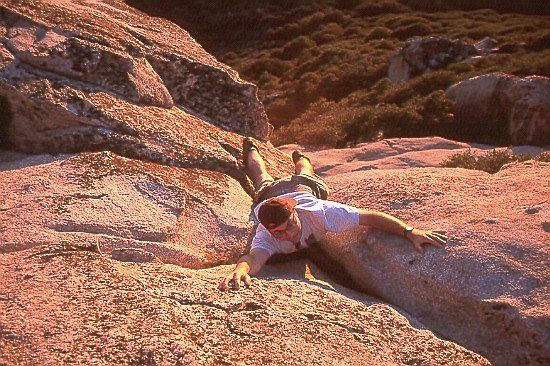
Here we are, on the summit of Stonewall Peak, watching the sunset.
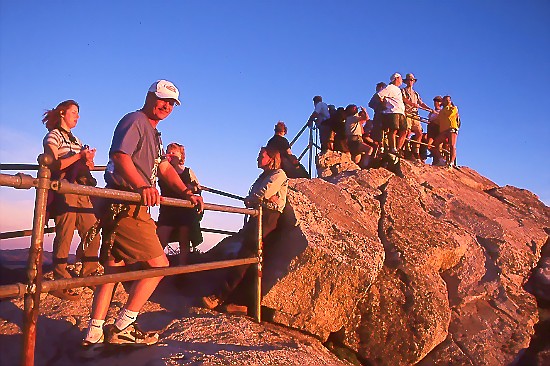
The view was just fabulous with mist shrouding the mountains in hues from blue to pink. The dot in the middle of the most distant ridge is the dome of the Mount Palomar observatory.
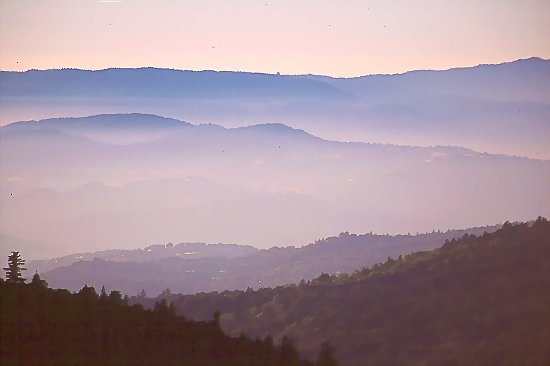
After our save return (with no Mountain Lion encounter), we drove to Blair Valley, which is on the western side of the Anza Borrego desert. Below is the place where we have spent the night. Except of some scorpions, nobody was around us. The flat terrain to the right is a dried up lake in the middle of the desert.

In the middle of August I attended a workshop on ground- and satellite-based ozone measurements in Boulder, Colorado. From there I flew to Amsterdam to take part in a conference on "Antarctic Biology in a Global Context", named SCAR. After arriving in Amsterdam, I took a train to get from the airport to the center of the city. While standing jet-lagged in the train, four guys came in at a stop, took the suitcase from the man standing next to me, and left the train shortly before the doors closed again. Only seconds latter the poor fellow realized that he was robbed, managed to open the door again, went out, and cried for help. Yet he came too late as neither he nor the station police could find the thieves. So my first impression of Amsterdam was not the very best one. Fortunately, it only got better. Amsterdam is a fabulous city with a large medieval center, which survived the last centuries undamaged. Houses are built of bricks and surrounded by water, the "Krachten". It's just the complete opposite of a U.S city. Streets are small and laid out in circles around the center rather than on a perpendicular grid. There is no spatial segregation between living, working, shopping, and spending leisure time. Typical houses have shops and pubs in the first floor, and flats and offices in the upper floors. Trying to get around by car is foolish as parking space does virtually not exist. Public transportation is most efficient and there is at least one tram or bus station less than two blocks away. The most popular means of transport, however, is the bicycle. And getting around by boat is also no problem. Pubs are everywhere and in some, called coffeeshops, selling and buying soft drugs is tolerated. In fact, there is even a hash and marihuana museum in town. Dutch people have traditional a liberal attitude, and this might also explain their drugs policy. After I had recovered from the shock in the train, I checked in at my hotel, and then went to the Rijksmuseum, which hosts the national art collection of the Netherlands. Below is a picture of the impressive building.
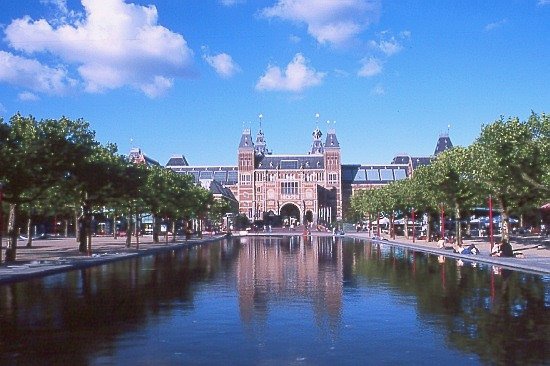
The museum itself is a piece of art. It was built by P.J.C. Cuypers in the late 19th century. The facade is decorated with large scenes of the middle ages, painted on tiles.
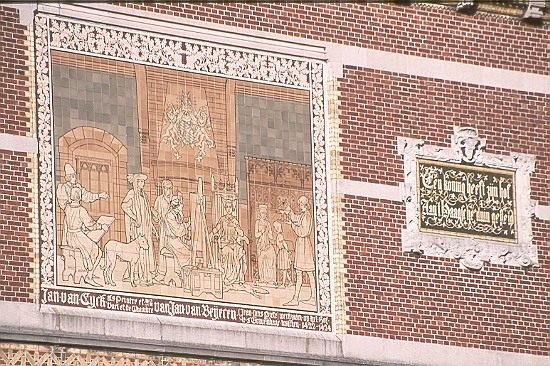
Large statues, depicting medieval professions, are placed on the cornice of the building's front walls:
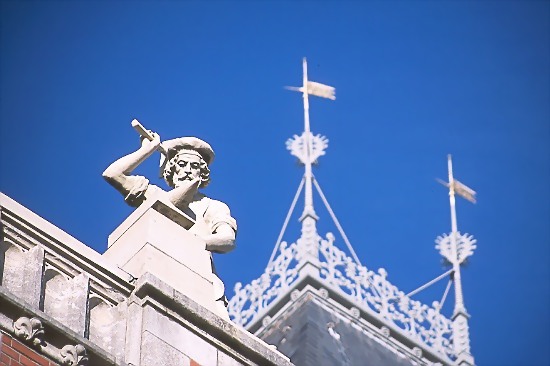
The Rijksmuseum includes masterpieces from Rembrandt, Frans Hals, Vermert, Jan Steen, only to name a view. The most impressive picture is "The Night Watch" by Rembrandt. It is so well known that even the seafood shack in front of the museum uses it for advertisement:
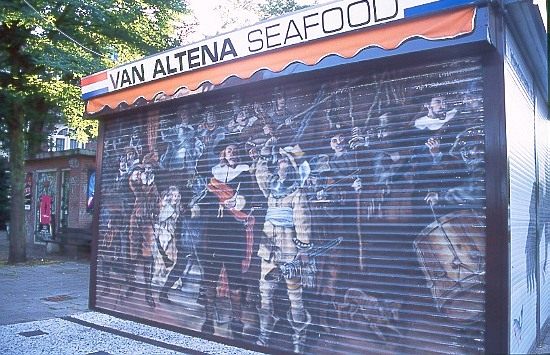
A picture of the original can be found here (That's really a high-quality link - don't miss it). For use on the shack, the painting needed some refinement as in Rembrandt's original version, the man in the foreground with the shiny yellow garment does not eat a fish. Let's forgive Rembrandt this negligence! Taking photographs in the museums is allowed, as long as no flash is used. Thanks again to the liberal Dutch attitude. The one below really turned out well. It is one of the paintings "guarding" the Night Watch and was created by Bartholomeus van der Helst. It shows a captain and his regiment in front of a brewery. It's a great piece of art, and - considering its width of several meters - also a really big painting.
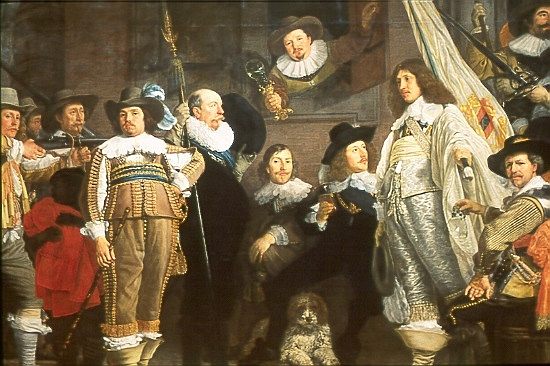
A Dutch painter that is even more famous than Rembrandt is Vincent van Gogh. Next to the Rijksmuseum is a museum completely dedicated to this remarkable artist. On my last afternoon in Amsterdam, I had the opportunity to visit the museum, which has some 200 paintings on display. During his lifetime van Gogh sold only one painting. He was always short in money and dependent on support from this brother Theo. Later in his life he suffered from depression and a form of epilepsy, and finally committed suicide. When looking at the paintings, which are now selling for as much as $80 million, I felt some sadness that van Gogh never had the appreciation during his lifetime that he experiences today.
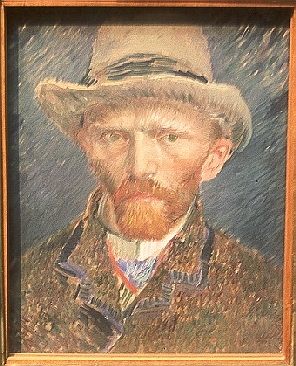
In the evenings after the day's meetings, I explored Amsterdam. Below is just a typical street scene. No cars, and people walking around or sittings outside of the numerous bars.
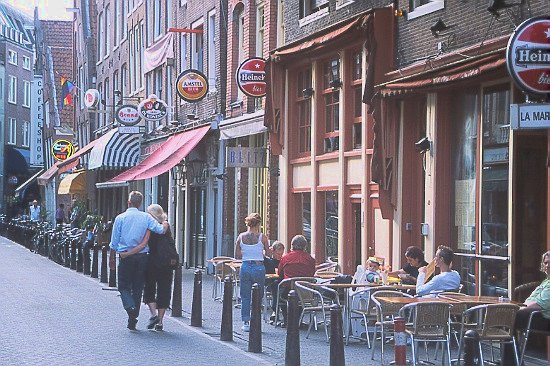
Most houses are narrower than a typical U.S. garage, but five storeys high. If you look closely, you see a hoisting beam protruding above the uppermost window of each house. These beams were used in former times to hoist up goods delivered from barges to the attic.
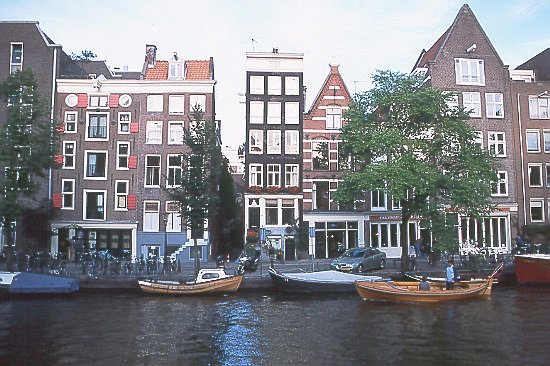
No house is too small to accommodate a bar. Tourist boats, as the one in the background, offer a unique cruise through the city.
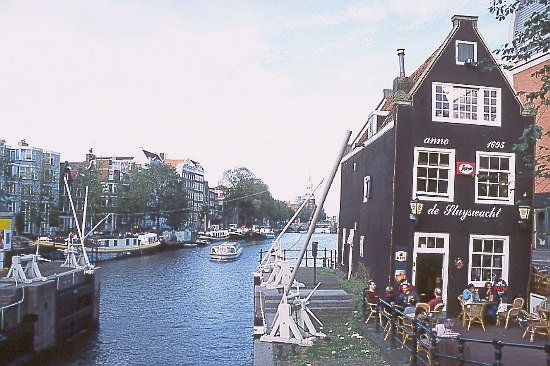
As I said before, Amsterdam is a city of bikers. Some say there are one million bikes sold in the Netherlands every year. Others say that one million are stolen. Another infamous saying in Amsterdam is: "You buy your first bike and steal the rest". So having a sturdy lock is rather essential.
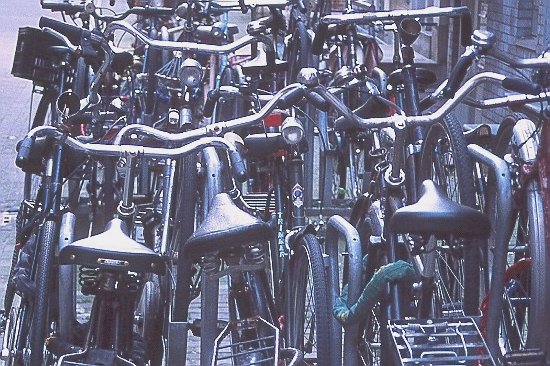
The Netherlands are a constitutional monarchy. The royal palace is an impressive building at the edge of Dam Square, the central place of city. The palace (or Koninklijk Palais) was completed in 1655 and expressed the glory of what was by then one of the world's most powerful cities.
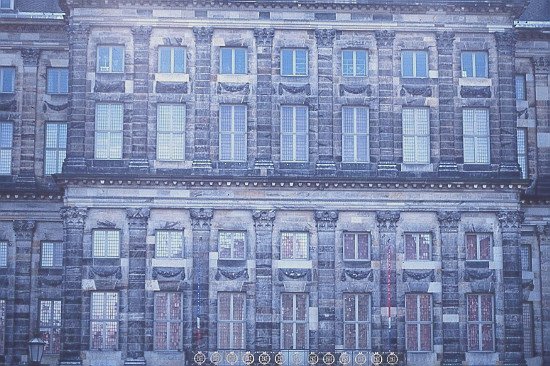
Holland is also famous for its cheese. A shop dedicated exclusively to cheese like the one below is something I am truly missing in the United States.
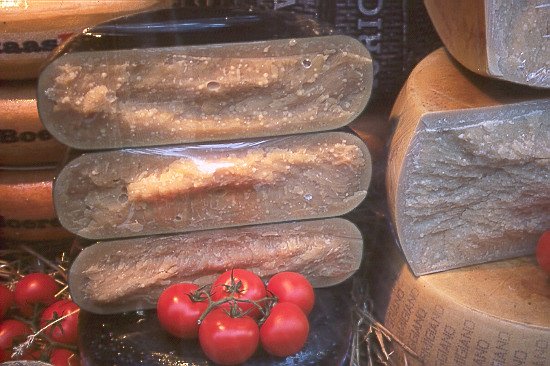
The tour through Amsterdam concludes with an impression that only can be gained here or eventually in Venice: a lonely boat steering through a maze of more than 100 channels and more than 1000 bridges.
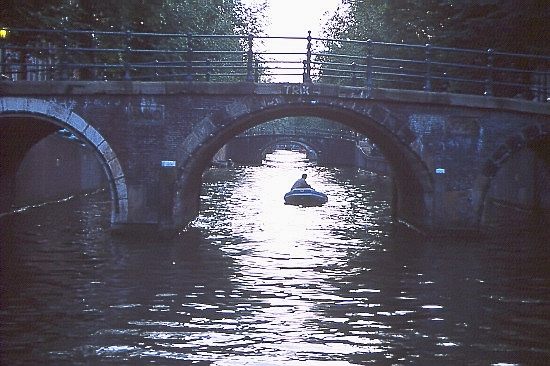
| |||||||
|
Top | Updates from 2001 | Current Updater
Last updated: 23 January 2016
|
|||||||